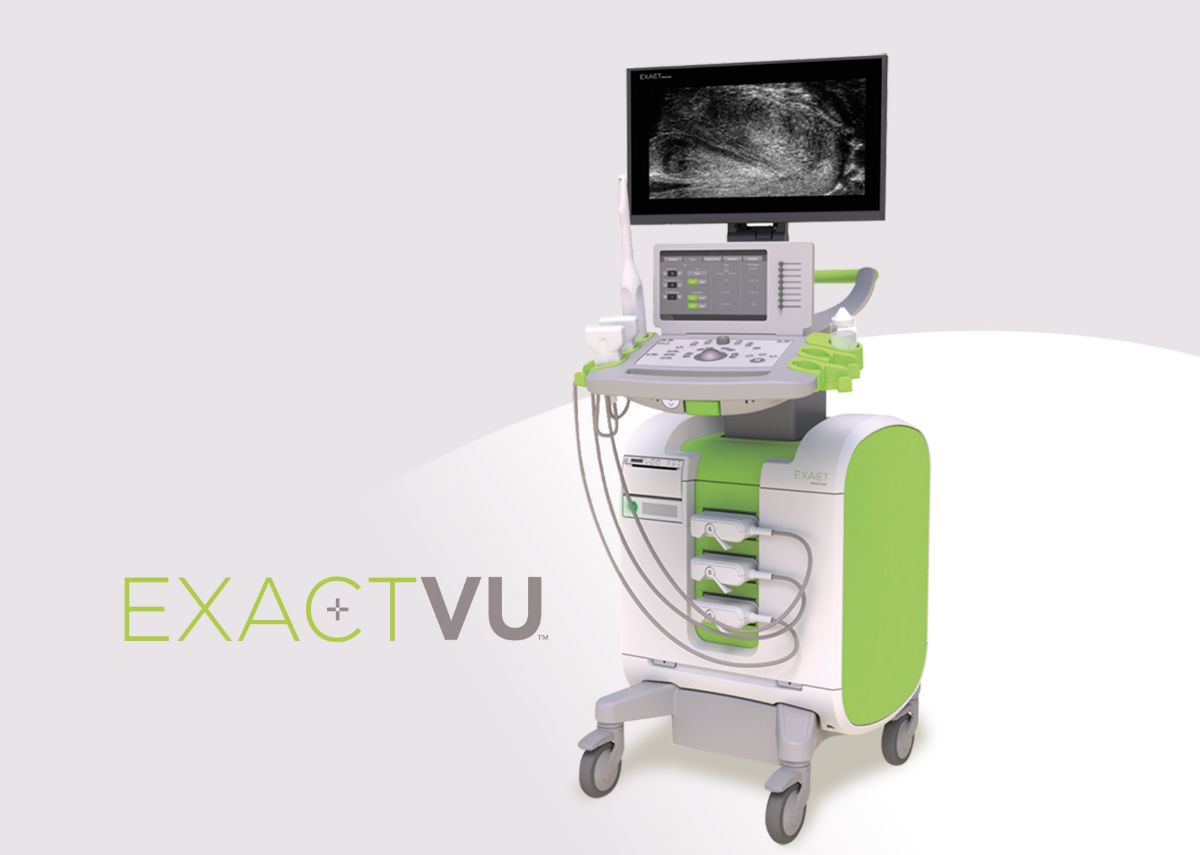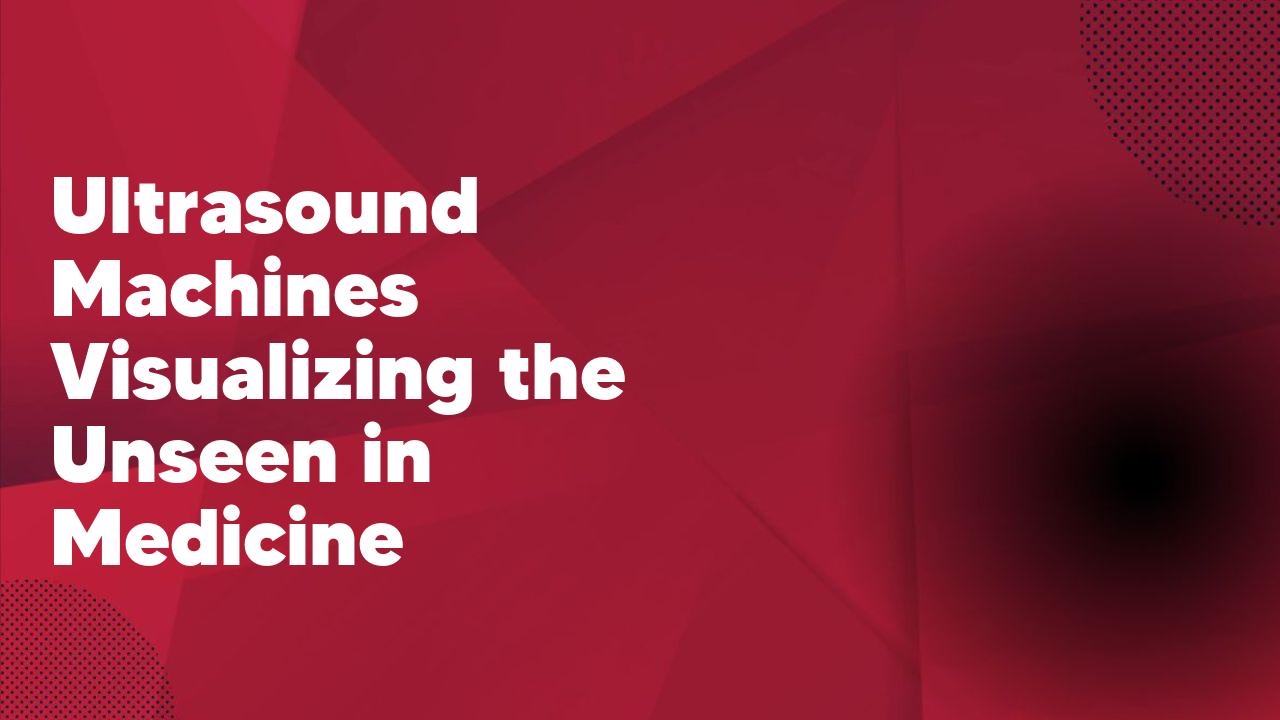Ultrasound machines have revolutionized the field of medicine by allowing doctors to visualize internal structures and organs without invasive procedures. These machines use high-frequency sound waves to create detailed images, providing valuable information for diagnosis and treatment. From monitoring pregnancies to detecting tumors, ultrasound technology has become an indispensable tool in modern healthcare.
The Evolution of Ultrasound Technology in Medicine
Ultrasound technology has come a long way since its inception in the medical field. Initially used primarily for imaging during pregnancy, it has now become an essential tool in various medical specialties. The evolution of ultrasound technology has led to significant advancements in image quality, portability, and functionality. With the introduction of 3D and 4D ultrasound, healthcare professionals can now obtain more detailed and accurate images, aiding in the diagnosis and treatment of various conditions. Additionally, the development of handheld and portable ultrasound devices has revolutionized point-of-care imaging, allowing for immediate and convenient assessments in emergency situations. The continuous evolution of ultrasound technology holds great promise for the future of medicine, enabling improved patient care and outcomes.
How Ultrasound Machines are Revolutionizing Medical Diagnostics

Ultrasound machines have revolutionized medical diagnostics by providing a non-invasive and safe way to visualize internal organs and tissues. These machines use high-frequency sound waves to create images of the body’s structures in real-time. This technology has greatly improved the accuracy and efficiency of diagnosing various medical conditions. Ultrasound machines are commonly used in obstetrics to monitor the development of a fetus and detect any abnormalities. They are also used in cardiology to assess the function of the heart and detect any abnormalities in blood flow. Additionally, ultrasound machines are used in many other medical specialties, such as radiology, urology, and gastroenterology, to aid in the diagnosis and treatment of various conditions. Overall, ultrasound machines have transformed the field of medical diagnostics, allowing for quicker and more accurate diagnoses, ultimately leading to better patient outcomes.
Exploring the Limitless Potential of Ultrasound Imaging in Healthcare
Ultrasound imaging has revolutionized the field of healthcare by offering a non-invasive and safe way to visualize internal organs and tissues. With its limitless potential, ultrasound has become an indispensable tool in diagnosing and monitoring various medical conditions. From detecting abnormalities in the heart to identifying tumors in the liver, ultrasound imaging provides valuable insights that aid in accurate diagnosis and treatment planning. Moreover, advancements in technology have further enhanced the capabilities of ultrasound, allowing for real-time imaging and 3D visualization. This has opened up new possibilities in areas such as obstetrics, where ultrasound is used to monitor fetal development and detect any potential complications. As research continues to push the boundaries of ultrasound imaging, its potential in healthcare seems truly limitless.
The Role of Ultrasound in Guiding Minimally Invasive Procedures
Ultrasound plays a crucial role in guiding minimally invasive procedures, providing real-time imaging and enhancing accuracy and safety. By using high-frequency sound waves, ultrasound allows physicians to visualize internal structures and organs, aiding in the precise placement of instruments and the monitoring of the procedure. This technology is particularly valuable in procedures such as biopsies, where the accurate targeting of a specific area is essential. Additionally, ultrasound can help identify potential complications or abnormalities during the procedure, allowing for immediate intervention if necessary. Overall, ultrasound guidance has revolutionized minimally invasive procedures, improving outcomes and patient safety.
Advancements in Ultrasound Technology: From 2D to 3D Imaging
Advancements in ultrasound technology have revolutionized medical imaging, particularly in the field of obstetrics. The transition from 2D to 3D imaging has provided healthcare professionals with a more detailed and comprehensive view of the fetus. This breakthrough technology allows for a more accurate diagnosis of fetal abnormalities and provides expectant parents with a clearer picture of their unborn child. The 3D imaging also enables doctors to better assess the growth and development of the fetus, ensuring a healthier pregnancy. With these advancements, ultrasound technology has become an invaluable tool in prenatal care, enhancing the overall experience for both medical professionals and parents-to-be.
The Future of Ultrasound: Emerging Applications and Innovations
Ultrasound technology has come a long way since its inception, and its future looks promising with emerging applications and innovations. One such application is the use of ultrasound in targeted drug delivery. Researchers are exploring the potential of using ultrasound waves to enhance the delivery of drugs to specific areas of the body, allowing for more precise and effective treatment. Another exciting development is the use of ultrasound in neuroimaging. By combining ultrasound with other imaging techniques, such as MRI or CT scans, doctors can obtain detailed images of the brain, aiding in the diagnosis and treatment of neurological disorders. These advancements in ultrasound technology are revolutionizing the medical field and opening up new possibilities for improved patient care.
Conclusion
In conclusion, ultrasound machines have revolutionized the field of medicine by allowing healthcare professionals to visualize the unseen. These machines have become an essential tool in diagnosing and monitoring various medical conditions, from pregnancy to heart disease. With continued advancements in technology, ultrasound machines will only continue to improve and provide even more valuable insights into the human body.
What are ultrasound machines used for?
Ultrasound machines are used in medicine to visualize internal body structures and organs. They are commonly used for diagnostic purposes, such as examining the heart, liver, kidneys, and reproductive organs.
How do ultrasound machines work?
Ultrasound machines work by emitting high-frequency sound waves into the body. These sound waves bounce off internal structures and organs, creating echoes. The machine then detects these echoes and converts them into images that can be viewed on a screen.
Are ultrasound machines safe?
Yes, ultrasound machines are considered safe for patients. Unlike other imaging techniques, such as X-rays or CT scans, ultrasound does not use ionizing radiation. It is a non-invasive and painless procedure that does not have any known harmful effects.
Can ultrasound machines be used during pregnancy?
Yes, ultrasound machines are commonly used during pregnancy to monitor the development of the fetus. They can provide valuable information about the baby’s growth, position, and overall health. However, it is important to follow the guidelines and recommendations of healthcare professionals when undergoing ultrasound scans during pregnancy.
What are the limitations of ultrasound machines?
While ultrasound machines are a valuable tool in medicine, they do have some limitations. For example, they may not be able to provide clear images in patients with obesity or excessive gas in the intestines. Additionally, certain structures, such as bones, may be difficult to visualize using ultrasound alone.
Are ultrasound machines only used in hospitals?
No, ultrasound machines are not only used in hospitals. They are also commonly found in clinics, doctor’s offices, and even some mobile medical units. The portability and versatility of ultrasound machines make them accessible in various healthcare settings.

